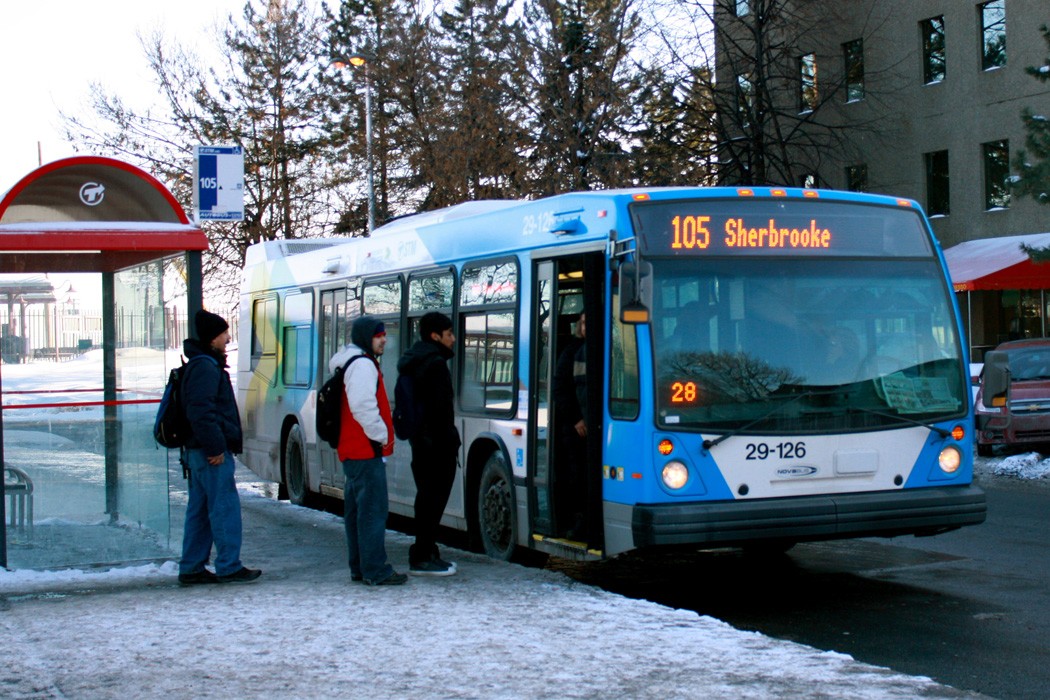A few things make the 105 Sherbrooke bus stand out in my mind. It was dreadfully slow. Over its two-mile route every block had at least one stop; and every stop required the exchange of at least a dozen persons. This popularity led to complaint number two: every trip required close and personal knowledge of more people than I would prefer to acquaint myself with at 7:30 in the morning. You could sit or stand, but no matter what, you would be sandwiched in and inevitably listening to or reading whatever was occupying your fellow travelers’ attention. Finally, it smelled. To my knowledge, this smell has not been replicated anywhere else in labs or nature, although I don’t know why anyone would try. It was the perfect mix of stale air, exhaust, body odor, and whatever chemicals they used in a futile attempt to clean the bus. In short, the 105 Sherbrooke was an awful route, and I hated every minute I spent on it. But it was the kind of hate that is a close cousin to love.
I was introduced to the 105 Sherbrooke by way of a friend. I was in Montreal for a summer internship a few years ago, and my friend was gracious enough to let me house-sit for her in the city’s western half. It was not, by any stretch, my first experience with buses; I had to use them from time to time while in grad school in Toronto. Then the buses were an inconvenience, but for these three months, they were to become a way of life.
At first I did what Toronto had taught me to do: plug in the earphones, keep your eyes down or up, and try not to acknowledge another living soul until you reached your destination. It was long, arduous, and insufferable. Yet about a week and a half into this commute my perspective started to change. One day I found myself pinned against the rear-exit door, having to alternate my attention between looking out the window and yielding to departing passengers. I had little choice but to start to notice the people and places around me.
Sherbrooke is one of the main arteries that runs the length of Montreal, and in this little stretch, it seems to collect everything the city has to offer. If I needed to head east into the city-centre for a meeting or workshop, I would hop on the bus and pass a restaurant, café, or grocery associated with probably every major and many minor cultures on earth. In addition to food sources, there were shops to cater to any interest. Finally, punctuating the commerce were beautiful Beaux-Art apartments. If I needed to head west to my placement, the bus passed by one of the city’s English-speaking universities and all of its amenities, before ending at a small bus and commuter train station that ferried people out to the suburbs. With the recent addition of a hospital at the foot of the route, I can imagine it would be possible to be born, grow up, be educated, work, and die in this small stretch known as Notre-Dame-de-Grace.
After a while, I started to tire of the landscape, and quickly turned my eyes inward to people-watch. It was not uncommon to be sandwiched between the art student and her portfolios, the high schooler on his phone, and the professional nervously watching the time. While the deeply embedded introvert in me hated it, I had never been forced to take such an interest in the people around me. What exactly is her tattoo? Is that a burn on his arm?–questions, of course, I would never ask, but questions that made me curious about the nature of the metropolis around me.
Sadly, my summer with the 105 Sherbrooke ended, and I have not had much of a need to take the bus since. But from time to time I do need to get my car repaired, and when I do, the 4 Northeast Capital is not an inconvenience. It’s a rare chance to dance with the city.
Image by Alex Caban ( Creative Commons Attribution-Share Alike 3.0 Unported).




